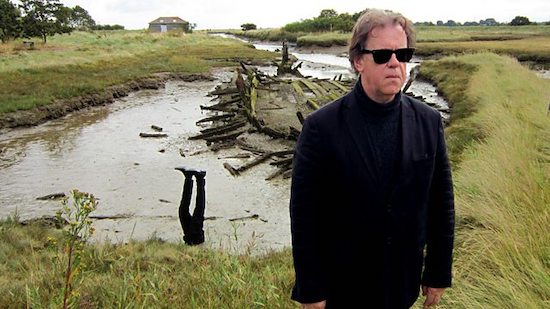For a few years at the turn of the last decade, it seemed that BBC4 had become a front operation for one person’s zeal to create 90 minute period dramas about dead British comedians. Kenneth Williams, Dave Allen, Frankie Howard, Morecambe and Wise, Hughie Green, Hattie Jacques, Tony Hancock – all of the above received the soft-focus biopic treatment, queasy with indoor smoking, 1970s interiors and the tortured sexual repression seemingly unique to Britain’s comedy past. When on Saturday, May 28th this year, the BBC premiered A State of Comic Ecstasy about the life of Peter Sellers, that it was aired on BBC Two rather than BBC4 felt more ominous than the Daily Telegraph reports that came the following week that plans were underway to axe the channel at the end of this year.
BBC4 never really recovered from a difficult launch in 2002. Birthed as ‘a place to think’, audiences thought twice about going near it. What exactly was BBC4? An outlet for the corporation’s archive? A home for the BBC’s experimental, intellectual tradition once associated with BBC Two? A home for slower, easier viewing for older audiences? Eighteen years on, I still can’t quite answer this question.
Instead, BBC4 works because it doesn’t have to answer this question – this is why it exists, a home for broadcasting away from market forces that view programmes as answers to demand questions. What we do in this country is managed decline. Starve something of funds until it can no longer reasonably fulfil its function, and then wonder why it isn’t functioning. We should be careful of our complicity in this process, and get better at how we defend complicated or imperfect ideas.
Of course, streaming has transformed how all of us consume culture. It’s very likely that in the last few years, you’ve enjoyed a BBC4 programme without knowing it was such. The channel’s budget is £44m on broadcasting that’s highly unlikely to be replicated anywhere else. As I hope this list demonstrates, BBC4 remains the place where you’re most likely to stumble upon a programme and have a new experience or viewpoint opened up to you. The good, exciting culture shouldn’t just be hidden behind BFI Player and MUBI subscriptions – for all of us, there are broadcasts that we discovered which changed everything. Flawed though it is, BBC4 remains one of the few channels where you won’t be told how overweight you are, how shit your house is and how them over the road are rinsing the system.
Had I tried to imagine a scenario more likely to precipitate a cultural collapse in this country, I’m not sure I could have thought of one so potentially and uniquely destructive than what we’re living through right now. Now especially, the BBC should not be pulling the plug on the channel that provides the most direct line for people to arts and culture. The average age of BBC4’s audience is 62. It’s a reality that older people are going to be staying at home a lot more in the immediate future – cancelling a channel that’s popular amongst that age group feels like a dereliction of duty. In compiling this list, I hope that we’ve captured the multitudes that BBC4 contains, and the different ways that the channel has shaped – and been shaped by – culture in this country.
Fergal Kinney
Everybody In The Place: An Incomplete History of Britain 1984 – 1992 (2019)
Joyously devoid of stock footage of gurning ravers and middle-aged male talking heads recounting the first time they dropped a Mitsubishi, Everybody In The Place is a tour de force of documentary making from Jeremy Deller. Set in a London classroom and ostensibly about acid house, Deller traces the lineage of a mass cultural movement from its black, gay Chicago roots to the present, whilst considering how rave culture in the late 80’s changed the face of modern Britain forever (via Karl Marx, the Miners’ Strike, The Hitman and Her and the untameable British countryside).
Music, mysticism and mass gatherings collide with Thatcher’s henchmen at Castlemorton for round two of the people versus rightwing authoritarianism in a field (the site is just 60 miles down the road from Orgreave). Deller brings a keen intuitive intelligence to a topic that’s too easily dismissed and finally gives it the import it deserves. Furthermore, there’s the implicit suggestion that the fissure that eventually led to a divided society and Brexit began with the divide and rule of the Miners’ strike. Everybody In The Place is public broadcasting at its best, and if every documentary that aired on BBC4 was approached as imaginatively then we probably wouldn’t be worrying about its closure.
Jeremy Allen
Top Of The Pops: The Story Of 1978 (2013)
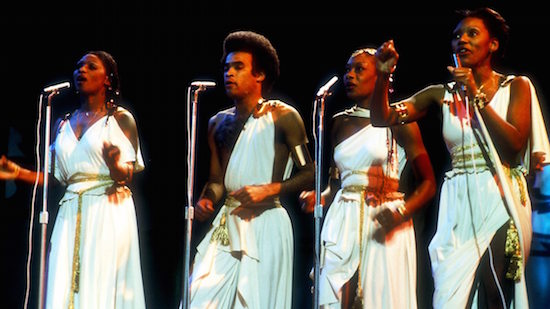
Top Of The Pops: The Story Of 1978 is a documentary where the battle lines of that year are celebrated decades later. At the time, it felt remarkable that any of our punk brethren could get on the show and each act was a victory. 17 million people watched Top Of The Pops, and it was a stark reminder of the combined power of pop culture and TV in the late 70s. The decade was a high water mark for that potent combination, and must be impossible to understand for anyone who grew up in the internet age. BBC4 was created by the children of that revolution, the ’70s kids with their own channel but within the tight parameters of what is acceptable and correct.
As an occasional pundit on the endless docs, recycling my own glorious youth, I will miss the fifty quid quips. But it always felt that it was a very narrow definition of pop culture – one that was firmly placed in the canon where some bands were hallowed forever, and others neatly removed from the narrative because their faces didn’t fit. Post-internet, TV and music fell out of love with one another. The BBC have all but given up – there is just that Jools Holland thingy show, and, er, that’s it.
Oddly, the gilded towers of TV land feel even further away from the white heat of the culture than they did in those old Top Of The Pops clips. In a time where music media is like a constant tsunami of noise and vision, it’s too easy to access everything. The canon is a mirage, guilty pleasures are a myth. Pop culture is edited by the consumer. We are all gatekeepers now and BBC4, despite many wonderful moments, was perhaps trapped by its rose-tinted X-Ray Spex.
John Robb
Jonathan Meades and BBC4 (2002 – )
Jonathan Meades’ documentaries on BBC4 offer a vision of what mainstream programming would look like in an alternative universe where serving the public interest had been replaced by attempting to interest the public. In place of anaemic and disinterested balance, Meades practises violent partiality, with an assured finality of judgement towards subjects that were not always used to such an approach. Although justly famous for his dismissive irreverence, Meades is not a deliberate contrarian, preferring to simply trust how things taste; which is either good or not, and it does not matter whether that was food, architecture, aesthetics or history. Soon we became used to watching majestic coronations and questions of ultimate value addressed with the same hilarious solemnity as holidays abroad and the production of washing machines.
The viewer does not need to share Meades’ list of strong dislikes, which he rarely misses the chance to short arm jab (God, strong ideological conviction, pointlessly decorative meals or General De Gaulle, to name a few of his recurrent targets), to appreciate that he is never reflexively unkind or simply aiming cheap shots at big targets. Driven by a deeply idiosyncratic and undogmatic humanism, rather than a misanthropic superiority complex (the barely concealed motivation of so many "family friendly" presenters), Meades is an inspiration to rebels, clowns and loners everywhere, demonstrating that the path less trodden can work as well on television as in print.
Watching these delightful programmes helped form my sense of what was possible as a commissioning editor and publisher, that flippancy and gravity need not be at loggerheads, and that the proper ambition of a public platform is to serve up the facts spicy, and never dry.
Tariq Goddard
Evidently… John Cooper Clarke (2012)
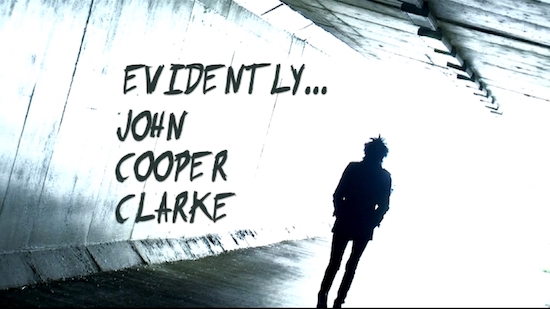
The 2012 BBC4 documentary Evidently… John Cooper Clarke was the first time I became properly aware of The Bard in all his stick-legged, perma-sunglassed, rapid-fire, big-haired, fag-on-the-go, Salfordian-lilted, no-fucks-given glory. It was definitely part of one of those hackneyed punk seasons where the Beeb wheels out the same old fusty has-beens. I was definitely watching it because I was cajoled into it by my dad, and it definitely wasn’t the most esoteric or well-regarded programme aired on the channel, by any stretch of the imagination.
The important part though is that it dedicated time to something which was not straightforwardly about literature, or music, or fashion, or art, but the countercultural gunge in between. It changed my naïve seventeen-year-old notions of who read and wrote and recited, and how they went about it and why, and it allowed me to go off to uni, cig clamped firmly between teeth, and be a sweary, hairbrush-averse, leather-jacketed English undergrad with gumption.
Diva Harris
The Killing (2011)
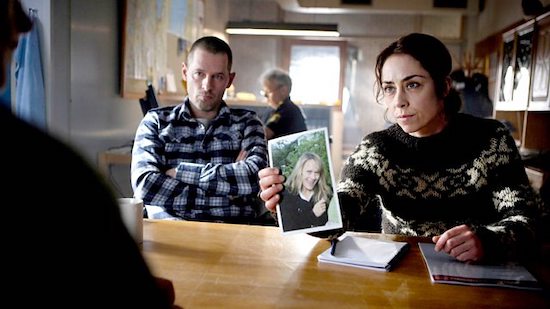
Who knew that commissioning a 20-hour long Danish drama, four years after it first aired, would change global broadcasting. But, when the BBC’s head of acquisitions Sue Deeks bought the rights to show series one of The Killing for BBC4, that’s exactly what happened. Subtitles were no longer to be feared. The hegemony of British and American television was overthrown. And new ways to make crime drama were established. When it first aired in the UK in January 2011 it wasn’t BBC4’s first subtitled drama. French detective drama Spiral had begun back in 2006, while the Swedish version of Wallander had done well for the channel after Kenneth Branagh’s remake had first built an audience.
However, The Killing was the game-changer. Because this was so much more than a whodunnit. It was a study of grief, in a family and a wider community. By foregrounding the impact of young Nanna Birk Larsen’s murder, rather than simply treating this shattering event as an intellectual brainteaser for a maverick detective, The Killing established a template that Broadchurch and many others would follow (though few would match it for intensity and effectiveness).
Each episode was a day in the life of a death – told from the perspective of police officers, the family and friends of the victim, and from within the wider political landscape. Sarah Lund, played with depth, subtlety and supreme skill by Sofie Gråbøl, was a new kind of central character. The woman-in-a-man’s-world tropes that began so brilliantly with Prime Suspect but had become tired could be abandoned. Lund was simply a brilliant police officer – serious (Lund never smiled on screen), dedicated, smart, increasingly embodying the idea of the loneliness of the long-suffering detective across three series.
The way The Killing and the shows that came in its wake, forming the genre that would become known as Nordic Noir, wrote for women was vital in establishing such a strong following. There were the compelling lead characters of Lund, Birgitte Nyborg and Katrine Fonsmark in political thriller Borgen and Sofie Helin’s socially awkward, brilliantly bolshy Saga Norén in The Bridge but also major, three-dimensional supporting roles, often in positions of seniority. The Killing pointed the way to a brighter future, albeit one in which no dingy basement, disused factory or deserted warehouse was too dark to venture into alone, without calling for back-up, and with only a trademark Faroe Isle jumper or leather trousers plus tiny police issue torch for protection.
Adrian Lobb
The Wonderful And Frightening World Of Mark E. Smith (2004)
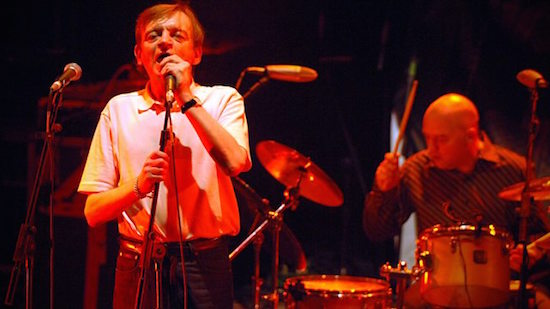
"It’s good being a Smith," smiles Mark E. Smith as the opening credits roll, "you can get away with murder." The Wonderful And Frightening World Of Mark E. Smith is a documentary that aims to capture the tumultuous career of the Fall across one short hour – broadcast in 2004, it came at a time of renewed interest in the group. A whistle-stop tour of key moments in the band’s career, it’s a fittingly erratic portrait rich in live footage and crackling interviews with Smith himself, alongside well-curated talking heads. Watch the delightful footage of the band’s final Peel session, including Smith’s isolated vocals, and the DJ’s own fond musings.
An infant Stewart Lee with school-disco haircut enthusiastically discusses ‘Hip Priest’; a very timid Marc Riley reflects on his years in the band; a young Ben Pritchard smiles smugly through his interview, seemingly unaware that his own departure from the group was inevitably on the cards.
It’s the interviews with Smith, however, that provide the highlights. "I’m getting really good at singing now, after 25 years," he croaks at the end: "honestly." Throughout, he offers retrospective commentary on Fall groups past, and does so on top form too: "Friel. Bramah. Baines. They realised that their true mission (in life) was to be in The Fall."
It’s but a fleeting snapshot of The Fall’s musical brilliance and Mark E. Smith’s psychic genius, but nonetheless, The Wonderful And Frightening World Of Mark E. Smith remains the best TV document of British music’s great outliers.
Cal Cashin
Night On Film: An A-Z Of The Dark (2011)
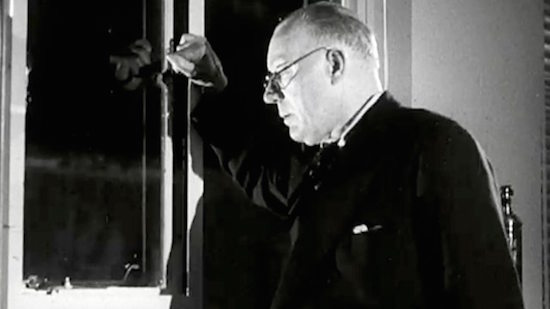
What I love about BBC4’s output is the themed series they sometimes programme. These broadcasts hark back in spirit – and pilfer some presentational tricks – from the public information films of the 1940s and ’50s. Or even those classic 1970s Open University programmes where various unkempt hairies would rabbit on about algae in test tubes. Best of all these kinds of broadcasts were a clear rejection of the dreaded talking heads format that – in my books – nearly destroyed intelligent television for good.
The programmes were also gloriously sensual. Laid out like a good quality tablecloth, they were never rushed and were attentive to overlooked details, often delighting in paddling about in the cultural arcana found in the Beeb’s library. There was a secrecy about them, too, an idea that only you and some retired engineer in Pontefract got the beauty or cultural significance of a particular clip.
I loved the way the broadcasts could also surreptitiously slip "heads" music into the background. It all seemed cosy and nostalgic enough to the Great British Public who were doubtless not paying much attention, half asleep in their chair after a Nando’s blow out, but it was proper operation notes from underground stuff. Thus, the listener was more likely to catch a snippet of Cluster or James Yorkston than be confronted by some everyman dayglo pop blaring.
My favourite has to be the series Night On Film: An A-Z Of The Dark that – guess what – started with the letter A and worked its way through aspects of what we consider to be "the dark," or "darkness". Most of the films were associated with the night-time activities of the living creatures of this planet, or the night itself. For instance in the available clip of the series you can take in some great footage of Sheffield steelworkers in the 1960s.
Elsewhere, there was an unforgettable sequence, again from that decade, where a lady cabaret dancer came home to comfort her partner (a glowering, bearded, beaded beatnik; doubtless misunderstood by the world) "who makes Aztec jewellery." I still can’t stop thinking – and laughing – about his preposterous air of entitlement and wondering what whining that poor girl had to put up with. Making such artful denouements means a lot of work from the programme maker, and are missed by most. But it’s the sort of throw away gesture that is – in my books at least – the sign of true quality.
Richard Foster
Free Will And Testament: The Robert Wyatt Story (2003)
A tender portrait of a beloved cult artist, Free Will And Testament: The Robert Wyatt Story is one of BBC4’s finest music documentaries. First aired in January 2003, the hour-long film offered a glimpse of what the fledgling channel could have been: intelligent and accessible, avoiding either Reithian paternalism or middlebrow pandering. As a recent covert to Wyatt’s music, I lapped it up.
Directed by renowned documentarist Mark Kidel, Free Will And Testament follows a relatively straightforward narrative structure, going from Wyatt’s psychedelic escapades with Soft Machine through to his later career as a leftfield singer-songwriter. Talking heads such as John Peel and Brian Eno pop up, but the dominant voices are, quite rightly, Wyatt and his wife and close collaborator Alfreda Benge.
Kidel takes us into their Lincolnshire home, a gorgeous clutter of jazz LPs, paintings and musical instruments. Benge’s artwork forms an essential part of the visual narrative, her drawing of Wyatt as a sweetly melancholy snail providing a particularly rich image. Wyatt is a wonderful interviewee, warmly self-deprecating but passionate about music and politics. In the neoliberal hegemony of 2003, it would have been easy to treat Wyatt’s socialism as a quaint anachronism, but the film takes his politics seriously, noting his support for the anti-apartheid movement and his opposition to the Falklands War.
The archival footage is fantastic, from heady Soft Machine jams to the 1974 Top Of The Pops performance where Wyatt "mimed grimly" in defiance of the ableist producers who asked him to swap his wheelchair for a wicker contraption. But what makes the film particularly special are the six songs Wyatt performs live with a crack band of jazzers, several of whom had been involved in the Soup Songs project. Stunning performances in their own right, the songs also provide a subtle commentary on the story: ‘Sea Song’ reflects his life-changing accident and relationship with Alfie, while ‘Left On Man’ expresses his solidarity with anti-imperialist movements in the global south.
It’s a joy to hear these formerly minimal songs in full colour, with pianist Janette Mason and trombonist Annie Whitehead taking the ‘Love Supreme’ changes of ‘Gharbzadegi’ and running with them. There’s a delicious moment where guitarist Jennifer Maidman playfully quotes the barn-dancing bass solo from Ornette Coleman’s ‘Ramblin’, but the real gravy is in the song’s climax, where saxophonist Larry Stabbins squalls freely over Whitehead and trumpeter Harry Beckett’s soaring fanfare. Wyatt cups his hands to project his voice, before picking up his trumpet and joining the fray.
Paul Weller’s appearance on Free Will And Testament is a reminder of his experimental side: his slide guitar weaves through the song like spun silver. ‘Sea Song’ is less fragile than on Rock Bottom, but the song loses none of its vulnerability or tenderness. The full documentary may be currently unavailable, but most of this sublime set is on YouTube [see above], offering something different every time.
Stewart Smith
Spiral (2005 – )
At a time when the UK is arranging its self-laceration from the European Union, it seems particularly unwise, distasteful and even jingoistic to axe one of the few channels that has put a concerted effort towards beaming rich Continental culture into our undeserving homes. Over the years, BBC4 has imported a range of programming from across the Channel that we wouldn’t have had easy access to otherwise. These have included dramas from Italy, Belgium, and all those Scandinavian countries where, if their crime shows accurately reflect real life, nobody ever thinks of flicking on the light switch before entering an unfamiliar basement that reeks of death.
Best of the bunch is France’s gripping Spiral. At its finest, this cop show makes the domestically celebrated Line Of Duty look like a fairly decent episode of The Bill. Its ensemble of flawed characters is led by Laure Berthaud (played by Caroline Proust) and Gilou Escoffier (Thierry Godard). The former is a workaholic whose personal life is a perpetual mess on account of her inability to focus on anything much besides determinedly solving the latest grisly murder that her investigative team has stumbled across. At one climactic moment, Berthaud even literally runs away from her problems, a presumably unintentional facsimile of a tactic once used by Mark Corrigan from Peep Show.
Gilou, meanwhile, tries his best to lay off the drugs and resist slapping every uncooperative suspect with his massive hands (often failing). Where evidence is concerned, Gilou’s Pooh-Bear paws can also get a little sticky fingered at times. Neither of the pair have any qualms about bending, breaking and bodging the rules in their pursuit of collaring the bad guys, or at least who they think are the bad guys at that particular point in the plot. This is despite the regular scoldings they receive from their superiors, who the duo couldn’t keep further out of the loop.
Added to this are a host of equally well-acted supporting roles, including the sympathetic magistrate François "Monsieur le Juge!" Roban and Joséphine Karlsson, a lawyer who is as devilishly clever and devilishly ambitious as she is, just simply, devilish. The show is cliffhanger-tastic and even when the plot gets too convoluted to follow without sellotaping the photographs of various crime bosses and lowlife snitches to your own whiteboard at home, you know that within the next two minutes or so one of Spiral‘s perpetually frustrated characters will yell out a cathartic "PUTAIN!"
Incidentally, that’s exactly what I exclaimed when I heard about BBC4’s probable departure from our television screens: Putain! Putain de bordel de merde! Pute de con! Pute de merde de chien! Putain! Putain! PUTAIN!
JR Moores
The Thick Of It (2005 – 12)
Having been disappointed by the form and content of BBC4’s output, one thing that caught my interest early was The Thick Of It, which started in 2005. Written by The Day Today co-creator Armando Iannucci, it merged the British satirical sitcom tradition of Yes Minister and The New Statesman and the docu-drama style of The Office.
The Thick Of It was an attack on politics as PR, and the perfect satire of New Labour. It had a direct line to the heart of that government – the BBC broadcaster turned New Labour media officer Martin Sixsmith is credited as a script consultant in the early series. Its central character, Peter Capaldi’s Malcolm Tucker, was obviously a thinly-veiled version of Blair’s Director of Communications, Alastair Campbell – notorious for his aggressive attitude towards the press, and especially his role in propagandising for the Iraq War, which by 2005 was already known to be even more disastrous than its most ardent opponents had anticipated.
Intelligently characterised, intricately plotted and brilliantly acted, The Thick Of It captured the cynicism of UK politics after the supposed ‘End of History’. None of the parties were named – the programme’s essential dynamic and key personnel did not change after the 2010 General Election. Instead, in the show’s final BBC Two-aired series, Tucker was in opposition, but was still trying to cajole his party’s inept civil service into convincing people that they could administrate things more effectively than their opponents, a barely-disguised Cameron-led coalition. Either way, the public seldom featured, except at stage-managed events whose choreography inevitably fell apart: politics was presented as something conducted solely through the media, a situation not likely to change even after the final series peaked with an hour-long special that mirrored the phone-hacking scandal and subsequent Leveson Inquiry.
By its final series, it had become a fixture amongst lobby journalists and politicians, whose personal closeness and intellectual sameness was exposed by their Twitter conversations – ablaze with excitement when Ed Miliband borrowed the show’s neologism "omnishambles" for a jab at David Cameron at Prime Minister’s Questions. His Labour was constantly described as being "just like The Thick Of It," from their scramble to be seen in Greggs when the Tories announced their tax on "hot takeaway food" to the calamitous EdStone of the 2015 election campaign – after which the Labour hierarchy and their supportive journalists said the party should tack right, before the members (old and new) overwhelmingly voted to shift it to the left.
To succeed, and to age well, comedy often relies on a central tension. The question behind The Thick Of It – do its creators think this type of non-ideological, PR-led politics is fine but being ineptly conducted, or that the whole system is rotten to the point of a much-deserved collapse – was comprehensively answered on Jeremy Corbyn’s ascent to the Labour leadership. Several key figures – Iannucci (who voted Liberal Democrat in 2010), actor Chris Addison and writer David Quantick – came out against him, unconvinced and seemingly uninterested in Corbyn’s attempted shift away from Westminster and the lobby, and towards mass participation.
As discussed further in this excellent episode of We Don’t Talk About the Weather, the problem with creating such an amoral universe is that you inevitably end up rooting for the protagonist. Campbell attacked Iannucci for accepting an OBE and becoming part of the establishment in 2012, tweeting him to say, ‘Three little letters can have more impact than you realise’, to which Iannucci replied, with lightning wit: ‘WMD’. Seven years later, Campbell was expelled from Labour after encouraging people to vote Liberal Democrat in the European elections: Iannucci retweeted right-wing Labour MPs supporting him, along with a snarky tweet asking if Corbyn had voted for the Brexit Party.
Re-watching The Thick Of It after the crushing of the left, and the extraordinarily childish Lib Dem election campaign that helped to secure the coronation of Boris Johnson (whose relationship with BBC comedy programmes is another story), it strikes me as an intriguing period piece, but utterly mirthless. Worse still, given the Conservatives’ attacks on the BBC despite its complicity and compliance in the 2019 election campaign, it’s hard to imagine the network commissioning anything even as sharp as this. The savagery of The Day Today is a quarter of a century ago now, and it feels far longer.
Juliet Jacques
All Aboard! The Great Reindeer Migration(2018)

You’re a pregnant reindeer. You don’t do much, and there’s not much to do. You’re lying around, nuzzling through snow to get to some grass, but you can hear the herders yell and their dogs yelp, and around you your fellow reindeer are starting to move. It doesn’t matter how you do it – there’s no instructions, as such – but you know you’re meant to wend your way north, across the Arctic wilderness, to be at the coast for summer when your calf will be born.
You start to walk. Your skinny ankles push down into the snow. You keep going. You become part of a long line of reindeer, threading through the trees. You keep going. You sit down, check out the pale expanse before you. The herders throw you some feed. You get up and your cowbell rings and you start moving again, spreading wide across the snow. You go beyond the treeline, and then the world is blazing white.
Later the sky turns gold then pink, and your walk becomes a light jog. You keep going. At night the herders’ snowmobile lights flash in the darkness, and you hunker down nearby with your friends. In the dawn you graze then start to move. You jog across the snow all day. From above, we see there are hundreds of you, in thin broken lines, all travelling together at the same pace. There is nothing to do but watch.
All Aboard! The Great Reindeer Migration started out as a 168-hour product of Norwegian slow television. In 2017, the Norwegian broadcaster NRK took a gamble that filming the weeklong migration of a reindeer herd from Šuoššjávri to Kvaløya – both north of the Arctic circle – would be a hit. BBC4 got in on the act the following year, giving us two hours of edited highlights – reindeer sitting, standing, eating and walking.
It’s bold television, because pretty much nothing happens. There’s no story or characters or dialogue. Instead, we get two hours of almost eerie silence as the reindeer move across the snow, enlivened by an occasional soundtrack of traditional Sámi joiks. So little happens that it could easily be background viewing, but then you’d be missing the point.
Watching The Great Reindeer Migration is about surrendering to its slowness, losing yourself in the repetitive detail of reindeer padding across tundra. It’s listening to the silence and noticing the changes in the Arctic light, and the way the reindeer bob and hew together like a swarm. BBC4 did a great thing when it gave the programme a wider audience in 2018, and if it stays around, hopefully next time we’ll get to watch the whole thing – all 168 hours of it.
Eli Lee
Timeshift: When Wrestling Was Golden (2012)
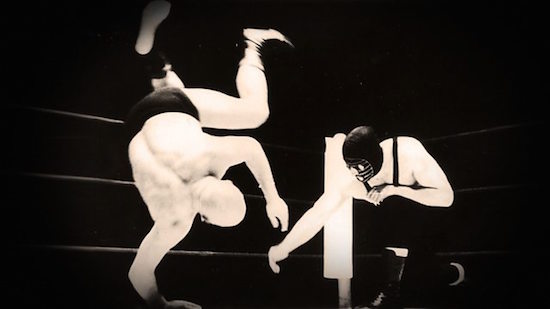
I know nothing about sport, so it wasn’t a surprise to find that televised British wrestling – the high point being the two decades following its 1965 launch – was a phenomena that had otherwise escaped my attention.
Much like pop music at the time, wrestling was a way out of their communities for young people from working class backgrounds. Take Adrian Street. He was desperate to avoid the pit life that had consumed his father, with whom a tense relationship was made all the more fraught by Street’s glittery, flamboyant persona. In doing so, Adrian Street unleashed something entirely new into the culture. Peter Thornley from Telford found soaring fame as Kendo Nagasaki, but utterly fucked his USP by agreeing to a live televised unmasking. Not one to make the same mistake twice, Nagasaki speaks to us here via his spiritual advisor, as he sits silently on her living room sofa in the background.
There was a certain type of pundit on the programme who all too casually glorified this sport. The ugliness was stultifying. For their supposed transgressions from prevalent notions of femininity, female wrestlers were rendered folk devils. As I suspected whilst watching, I did not forget footage of respectable old dears who looked and sounded like my grandmother pulsating with disgust at one female wrestler. "She wants shooting, she wants shooting her! Because she’s dirty. She’s not fit to be called a woman." One audience member made for the edge of the ring, and injected the wrestler Jayne Porter – Klondyke Kate – with a foot-and-mouth disease injection (Britain had suffered an epidemic in 1967). Porter was hospitalised.
It wasn’t any of these factors that led to the decommissioning of British wrestling in 1988. Broadcasting executives thought it prurient to chase a more aspirational, more middle-class audience base. There was a cultural priggishness to Thatcherism, then at its giddy zenith, which cringed at the sport’s gaudy working class opulence. I learnt a lot about my country through watching this programme.
Fergal Kinney
The Yorkshire Ripper Files (2019)
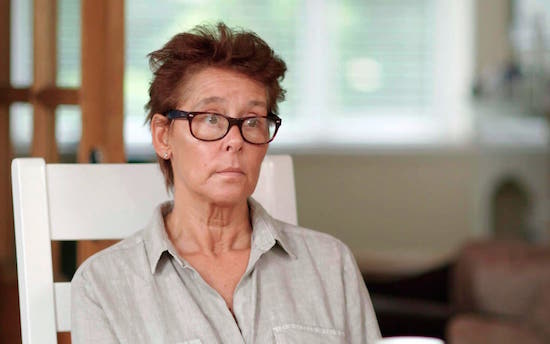
There have been many documentaries about Peter Sutcliffe and the murders and assaults he committed in the 1970s and early ’80s across West Yorkshire and Greater Manchester. The same techniques of softened voices explicitly detailing the crimes, talking heads theorising with authority, clumsy recreations. Many purport to be the story of the murders. But there is no such story, only a story, and these documentaries have been repeating the same one of Peter Sutcliffe and simplified, overreaching psychology.
Liza Williams understands this – she reorients the perspective, casting it instead towards the victims, those left behind, and the society that bred such crimes and their failed investigation. Over three episodes, Williams uses archival footage and contemporary interviews to calmly and thoroughly document the crimes, the victims, the police inquiry as well as the media and popular response.
The Yorkshire Ripper Files builds a devastating account of misogyny and its operation at a personal and structural level. We see the police bungle its investigation with its conviction of the motive of Sutcliffe and its presumptuous and pejorative attitude towards many of those murdered. We see the press castigate the victims for their apparent loose morals and desires to have fun or the fact that some had chosen to pursue sex work out of dire necessity.
When The Guardian reviewed the programme, the writer noted that the documentary took them back to a time that seems almost foreign. I felt the exact opposite. I was drawn into seeing the connections between a UK or forty years ago and now. We see footage of the first Reclaim the Night protest by the women of Leeds in response to the police telling them and not the men of the city to stay indoors. As violence against women has persisted, so have the Reclaim the Night protests. Or as Williams’ archival footage finds repeated incidences of women being blamed for the crimes they were subjected to – ‘they had it coming’ – it is right we think of the same dismissal being applied, in particular, to victims of sexual violence.
Writing this now, I also think of the growing number of women whose murders have been dismissed as "sex gone wrong." The forms of violence and disregard shift, but they persist, nevertheless.
Amongst the growth industry of true crime, Williams’ documentary is relatively unique. Few are concerned with the victims nor with why the crimes happened and their societal significance. Williams’ The Yorkshire Ripper Files is an utterly devastating account for doing those exact things with the care and attention that they deserve.
David Lee Astley
The Art Of… (2010 – )
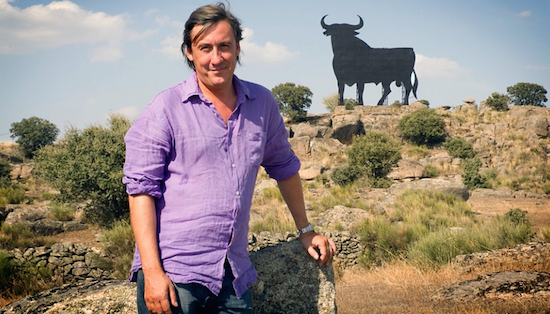
Andrew Graham Dixon is as bourgeois as they come: a kind of Ferry-esque aesthete wafting around galleries in an expensive blazer spouting monologues that occasionally veer into ‘Accidental Partridge’ territory, though there’s no doubt he knows his Renoir Onions. As the BBC’s most eminent art critic, Dixon takes a deep dive into the art of nations: Art Of China, The High Art Of The Low Countries, The Art Of Germany and so on, and the one that really knocked me sideways was the 2008 series The Art Of Spain which explores the Moorish history of Andalusia and the Islamic foundations of Spain as a nation, and of course its art.
It became a personal ambition to visit the Alhambra Palace in Granada as well as the great mosque in Cordoba which, on arrival, was no less impressive than I’d imagined, although the cathedral riven through the middle is both an emblem of Spain’s bloody history and a bit of an eyesore among the majestic byzantine arches. Amusingly during The Art Of Spain, for continuity reasons Dixon is dressed throughout in the red of a bullfighter or a flamenco musician (I forget which) which, during several later scenes in the baking sunshine, becomes absurd. Andrew’s solo adventures are a joy to behold in the main, even when he errs into the histrionic, though the buddied-up explorations of Italy with the chef Giorgio Locatelli are a confusing, forced, frustrating dog’s dinner of a show.
Jeremy Allen
Only Connect (2008 – )
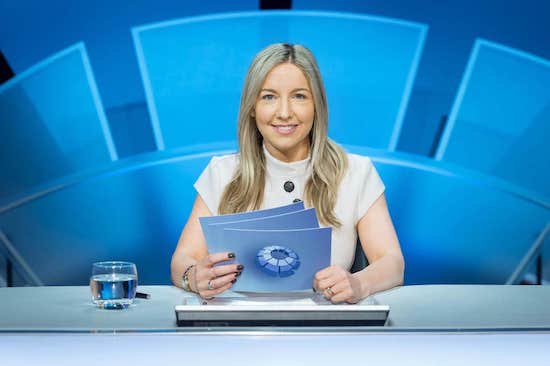
If BBC4 was a quiz show, it would probably be Only Connect. It doesn’t matter that Only Connect is on BBC Two these days. This only makes it more apparent, like glimpsing something outside of its natural habitat.
It’s not that it’s hard. University Challenge is hard. Mastermind is hard. Only Connect is pure intellectual pantomime. For the blissfully unaware: hardened quizzers, often champions from other shows, form teams and work their way through a series of rounds in which they identify the common thread between a series of clues. These clues aren’t just obscure, they are barely comprehensible combinations of numbers, words and images.
Often, the questions relate to the format of the show itself, which only enhances the feeling that you’re in a parallel universe where everybody watches Only Connect all of the time. Find yourself in deep enough though and you begin the hang of it, pre-empting the sorts of audacious connections the producers would dare to come up with. At times like these it feels like you’re using your brain in all directions at once – a genuinely satisfying and probably useful exercise.
Explaining how the quiz works is impossible, and misses why it’s great. As host, Victoria Coren-Mitchell pitches right in the middle of high-brow and naff. Instead of using, say, language or gestures, she offers contestants a choice of questions through ancient hieroglyphs. Any post-1990 knowledge is considered vaguely shameful, especially if it’s regarding pop culture, and the theme tune is performed by a string quartet. Coren-Mitchell’s jokes, which are frequently criticised as being ‘bad’ are actually ‘good’ in that you can do a little groan or eye-roll at home and feel smart too – a comforting ritual which is all part of the fun.
I love it. Not least because accidentally catching the last five minutes gets you aggressively fired up before University Challenge starts. It’s genuinely cult programming, uncompromised by distracting things like ‘polished scripts’ and ‘budget’. With its future safely detached from that of BBC4’s, may we continue to connect over brilliant, infuriating blue rectangles.
Lucy Holt
Synth Britannia (2009)
In all honesty, I’d say BBC4 is probably the one channel I’ve watched the most over the years – yes the Top Of The Pops re-runs are a key part of that, but there’s also Detectorists, as well as intelligent films about art and off-beat documentaries about road signs or the history of sweets. Then of course there are the strong Friday night music selections, although it’s starting to show a bit that there’s been few significant commissions of late, with newer shows opting for a slight dumbing down and/or ‘sexing up’ depending on where you stand. Hell, I’ve even contributed to a couple, such as captions for some episodes of TOTP2 and Sounds Of The Seventies. The one show that I do hold dear, and would probably cite as the greatest single episode of anything ever made, is 2009’s Synth Britannia .
The Britannia strand – such as Punk, Reggae, Prog, Metal etc – had been an intelligent, and worthwhile cultural archive, shedding light on some of the obvious, and not so obvious, figures that helped birth an era whether by happy accident or design. While the whole premise of this show could’ve been dismissed as a strand of New Wave, Synth Britannia gave context and belated respect to a stream of musical development that had far more impact than is given credit for.
With groups such as OMD, The Human League, pre-Midge Ultravox and Throbbing Gristle reflecting their then-grubbier, industrial surroundings, seemingly independent of each other, there was no Sex Pistols at the Free Trade Hall epiphany here, where everyone present formed a band – just various people inspired by things such as Kraftwerk, Donna Summer, Roxy Music, Sylvester, Wendy Carlos, JG Ballard and more, who were literally building their own instruments in order to create the sounds they heard. Building their own studios in post-war ruins and squats, to the distrust of the Keep Music Live purists and Musician’s Union, this was a proper outsider music, that went overground when Gary Numan – much to the horror of OMD and the League – became No.1 in 1979.
Synth Britannia had the correct talking heads, from Daniel Miller to Vince Clarke in his shed of joy, and Philip Oakey whose memorable quote ‘guitars hurt your hands’ is a maxim to live by. That the documentary is split in two, and then focuses on the likes of Depeche Mode navigating pin-up status in Smash Hits and being snubbed by ‘serious’ music weeklies while out-selling pretty much everyone deemed ‘cooler’ during the rest of the 1980s, made the film feel like it was filling in the gaps of a neglected history. It took something I love very seriously, and treated it with the respect it deserved.
Ian Wade
Fantabulosa! The Kenneth Williams Story (2006)
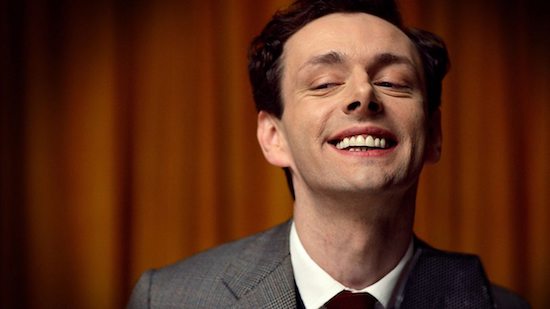
The Beeb definitely stirs up mixed feelings. For many people living in Scotland, trust in the institution vaporised after their out of touch coverage of the Scottish IndyRef campaign, and the current London-centric, snidely anti-Nicola reporting of the COVID-19 pandemic isn’t exactly helping. But despite their sometimes dangerously skewed reporting of British and world news, you can’t argue with the quality of a TV play like Fantabulosa!, for example.
Michael Sheen was a surly-camp mix of pomp and prim in his transcendent study of Kenneth Williams in the 2006 film about the much loved, beyond extra star of the Carry On films and Willo The Wisp. Wild over-enunciation and saucy asides were offset with real sadness in the story of the buttoned up, shame-filled actor who reputedly stayed celibate all his life and admitted to feeling like a lonely underachiever.
Claire Sawers
Krautrock: The Rebirth Of Germany (2009)
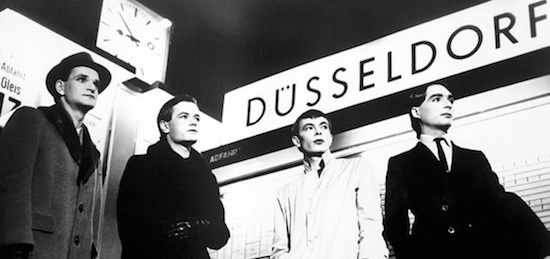
Initially commissioned as a companion piece to Synth Britannia, Krautrock: The Rebirth of Germany holds a special place in my heart – a very enjoyable, but ultimately strange documentary. I saw it when I was 16, and I loved it; as a concise introduction to a dozen Earth-shaking groups, this is an excellent watch. We see Faust’s cement mixer, see wonderful footage of early Kraftwerk wigging out, traffic cones in tow, and we’re invited into the zany Amon Düül communes.
There are interviews with all the key players, most notably Damo Suzuki says he was too stoned to remember joining Can, and Iggy Pop does an excellent job of contextualising the innovations of NEU!. There’s not loads in it for seasoned fans of German grooves, but it is nonetheless a good talking heads-based introduction to krautrock; indeed, alongside a pirated PDF of Julian Cope’s Krautrocksampler, it was my introduction to krautrock.
Many of the problems with the programme are manifested in its rather clumsy title, more than just implying the existence of a ‘krautrock’ scene that unified a country searching for post-war identity. Narrator Ben Whalley seemingly devotes the documentary’s runtime to dispelling this – he acknowledges that German music’s post-war protagonists were all operating in different parts of the country, unaware of each other’s existence.
Promptly following this, he discusses (and wholeheartedly agrees with) arguments that the very term "krautrock" is slightly racist and grimly jingoistic, before boldly declaring thirty seconds later that "the real heroes were the kraut-rockers!," over the top of a particularly hammy Bowie-soundtracked outro. It’s not perfect, but I’m very much eternally grateful for this BBC4 documentary.
Cal Cashin
The Secret Life Of The Motorway (2007)

On the face of it, it would be easy to dismiss the notion of a three-part documentary chronicling the design, construction and use of Britain’s motorway system as an exercise in worthy-but-dull TV programming. Indeed, such has been the ubiquity of the motor car and the acceptance of a clogged up transport infrastructure, that it’s taken a pandemic for the population to realise how poorly served we’ve been since the ambitious creation of the motorway – not least as motorways were designed, in the words of architecture critic and talking head Jonathan Glancy, as a form of "open heart surgery" in response to the "clogged arteries" that made up Britain’s pre-war road system.
But there’s so much more to The Secret Life Of The Motorway than examination of how the country got moving in the decades that followed the Second World War, for here is a social history that embraces civil engineers, graphic designers, the navvys who built the motorways, the importance of the service station and the impact they made as a go-to destination for demographics of all stripes.
Elsewhere, this engrossing documentary explains the global impact of the British motorway. The roadside traffic sign designs by Margaret Calvert and Jock Kinnear set a global standard that’s still used to this day. But crucially, The Secret Life Of The Motorway is a programme about people. From those who designed them, the immigrant labour that built them, and the communities and industries that sprang up because of them, this is a history of Britain viewed through the prism of transport.
At once highly original, informative and hugely entertaining thanks to the contributions of the projects’ wide-ranging participants, this is a fantastic document that wouldn’t be shown anywhere else. Indeed, this is the first BBC4 show viewed by this writer, and it’s the one that convinced me that here was something very special.
Julian Marszalek
The Jeremy Thorpe Scandal (2018)
A Very English Scandal garnered much acclaim upon its release in 2018. The BBC1 series, written by Russell T Davies and directed by Stephen Frears, saw Hugh Grant star as the late Liberal MP Jeremy Thorpe whose alleged part in a plot to kill his lover, Norman Scott (played by Ben Whishaw), rocked the British Establishment in the mid-1970’s. Yet BBC4’s airing of a documentary exploring the true-life tale behind the dramatisation received just as much acclaim – especially because of the extraordinary history behind it.
In 1979, Panorama reporter Tom Mangold researched and made an explosive documentary about Thorpe which was due to air following Thorpe’s trial for conspiring to kill his former lover. Based on the strength of the evidence against Thorpe, Panorama were certain Thorpe would be convicted. However, Thorpe was, much to everyone’s surprise, acquitted and Mangold was told that his documentary would never see the light of day. In fact, the BBC Director General at the time ordered every single copy of the documentary to be destroyed, such was its damning content. As well as painting a derogatory picture of Thorpe, the documentary exposed the murky world of the 60s and 70s establishment where cover ups and dubious favours were rife in the police, the legal system and the very highest echelons of British politics.
Mangold disobeyed the Director General and saved a copy of the documentary. In keeping with its commitment to showing ground-breaking and daring television, it was BBC4 who finally aired it almost 40 years after the original. “The programme you’re about to see has remained secret for 40 years,” Mangold tells us in the opening shots of the documentary. He continues: “As the reporter…I kept a copy and hoped there would come a day when viewers would see it.”
It finally aired on BBC4 soon after the first episode of Frears’ dramatisation and illustrated, often in painstaking detail (such was the thoroughness of Mangold’s research), the complex web of cover-up’s Thorpe wove in order to separate his public and private lives. In one section, we see how a potential deal with Ted Heath to form a coalition government would have seen Thorpe become Home Secretary and by default, in charge of areas such as the police and the secret services – both of whom had extensive files on Thorpe. In the role, Mangold says, Thorpe would have access to these files and the means – if he wanted to – to destroy them. The coalition never materialised, but it didn’t seemingly stop Thorpe going to extraordinary lengths to conceal his past.
At the time of his love affair with Scott, homosexuality was still illegal in the UK. Whilst most of his other sexual encounters up until Scott had been private affairs, Scott spoke out, often, putting Thorpe’s political career at risk amidst a conservative society who still held antiquated views on homosexuality. Mangold pulls apart what followed, namely, the allegation that Thorpe hired hitmen to kill his former lover. The attempts failed and the documentary uncovers multiple errors by the police and the legal system to properly explore what really happened. His questioning, on a par with some of David Frost’s finest inquisitive moments, asks police, politicians and former aides from the time if there was a cover up: many replied in the affirmative or buckle under Mangold’s intense scrutiny.
The documentary also revealed that one of the suspects who the police had dismissed as deceased was in fact believed to alive and well and living under an alias and that there could have been up to five separate attempts on Scott’s life. It also took viewers into the heart of the courtroom with the judge whose summing up of the case is now historically viewed as one of the most biased in British legal history. Perhaps most importantly, the documentary saw new calls for another police investigation free from the prejudice, corruption and cover-ups that marked the original.
At no point does Margold shy away from getting to the truth and while it doesn’t quite give us a definitive conclusion, it gives us a multitude of questions and a picture of the British establishment still rarely seen on television today. The Jeremy Thorpe Scandal would be the single most viewed programme in the channel’s history. BBC4 is vital now more than ever for bringing us ground-breaking television that seeks to explore, question and challenge. – Elizabeth Aubrey

